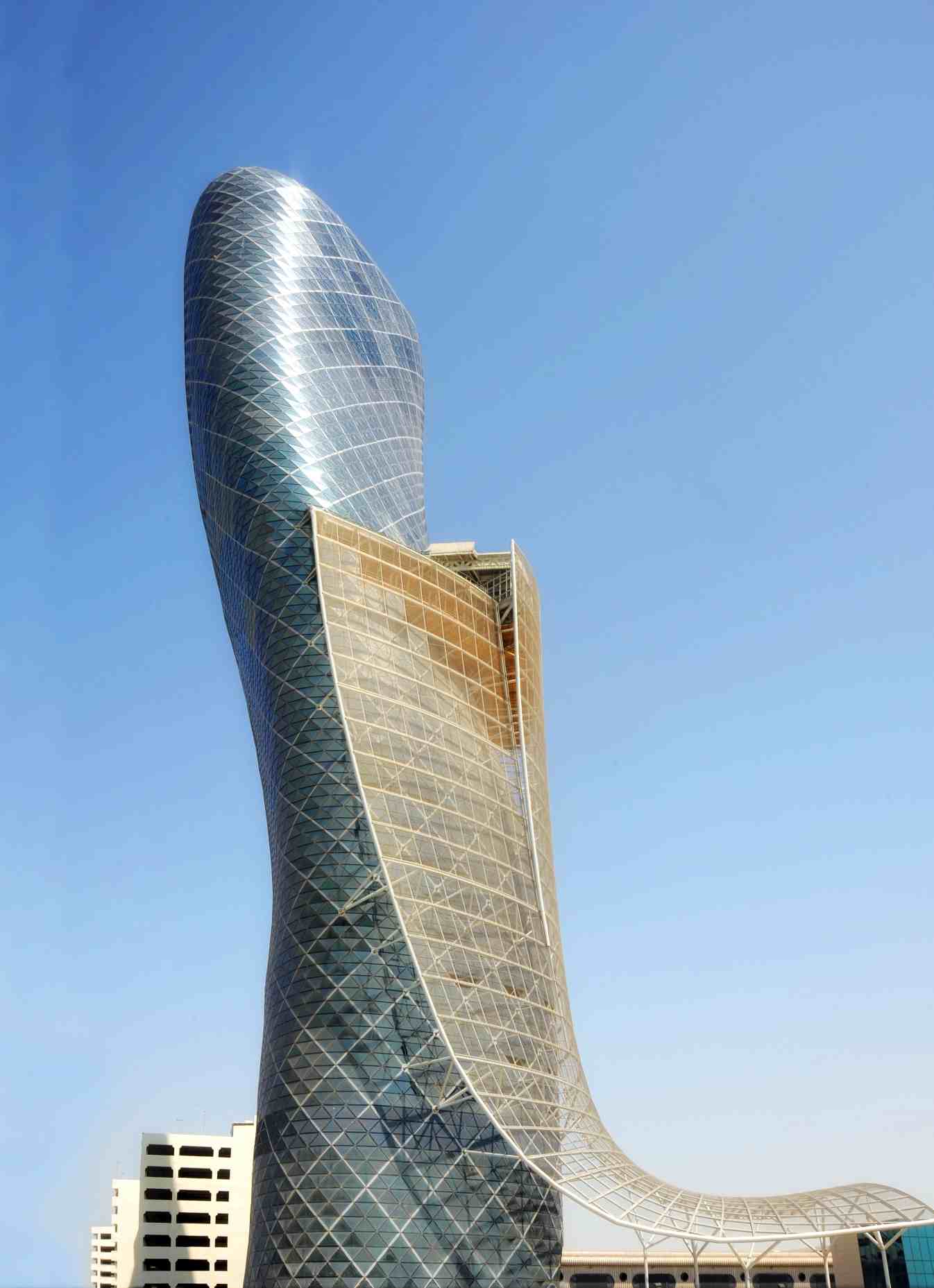Glass I-beams and rooftops: The cold-bent truth


With a new practicality influencing architects, we expect to see fewer glass-box buildings in the years to come. Opaque walls insulate better, and seem a better choice for an energy-wise future. Yet glass technology is advancing faster than any other material category, I'd argue. We're just starting to see the astonishing results.
The other day, Hyatt opened its doors at Capital Gate, a new and iconic, tilted tower of 12,500 glass panels in Abu Dhabi. Designed by RMJM, the 525-foot-tall, mixed-use building leans 18 degrees out, more than four times the cant of the famed Leaning Tower of Pisa. The feat earned the designers an entry in Guinness World Records.
It could only happen with glass.
Capital Gate has a powerful exoskeleton or diagrid to handle its incline gradient as well as wind and seismic loads. But unlike the diagrid on Foster and Partners' famed 30 St Mary Axe in London, each panel in Capital Gate's curtain wall sports a unique geometry.
Glass structures
In other projects, cold bent glass is enabling ever-more complex shell shapes. With this idea, Morphosis designed Phare Tower in France -- a friendly blob I hope will be built one day, though it suffers chronic delays.
Glass formats are bigger than ever. Huge glass panels of up to 50 feet long and 12 feet wide are possible; Steve Jobs unveiled massive curved panels for Apple's new Cupertino building last summer, also by Foster and Partners. Apple has used giant, laminated flat formats for its stores in New York (32 feet), Shanghai (40 feet) and Sydney (45 feet). Presumably Jobs knew what he was getting into.
The curve of Cupertino's "spaceship" would add dramatically to the strength of each glass section. The German geniuses at Seele and Sedak, arguably the world's best structural glass fabricators, have unveiled a novel technique for overhead glazing. The laminated bent-glass units in shallow S-shapes deliver enormous structural capacity. All-glass rooftops with spans of up to 25 feet are possible -- no supporting steel needed.
Glass I-beams?
If huge curved glass roofs don't excite you (or scare you), two experiments in glass I-beams show how far off the deep end we've gone with structural glass.
Two researchers at Linnaeus University in Sweden recently unveiled structural members made of glass web and timber flanges glued together. These beams and columns are a freaky idea, but they match lightweight plywood beams in strength and stiffness.
Not to be outdone, at the University of Prague a team of researchers came up with a novel beam made of steel flanges adhered with polymer to -- again -- a thin glass web.
More where that came from
There's much more in the world of glass beyond structural heroics: New foam tapes to replace structural silicone, triple-glazed IGUs, smart glazing that goes frosted when the sun hits it, and many other valuable and surprising advances.
We'll circle back to this topic soon to review the latest and greatest.
Many of the novel building methods and materials are seen first at an annual conference held in Tampere, Finland, called Glass Performance Days. Jorma Vitkala, chairman of GPD's organizing committee, told this year's crowd to attend the GPD China edition, to be held March 31 to April 1 in Shanghai.
Why? Maybe because about half of all the world's glass production is in China. Of the total $100 billion global flat-glass market in 2010, about 70% went to Europe, China and North America, says Vitkala, with about 70% of the material used for buildings. European companies like Saint-Gobain and Guardian dominate the market, as do Japan's Asahi and NSG Group.
How big is China in the glass supply equation? Consider that the United States has about 40 float-glass production lines, give or take. China has more than 200 lines -- or half the global production capacity for float glass.
It's only fair. China is also home to at least half of the world's new building construction.
This post was originally published on Smartplanet.com